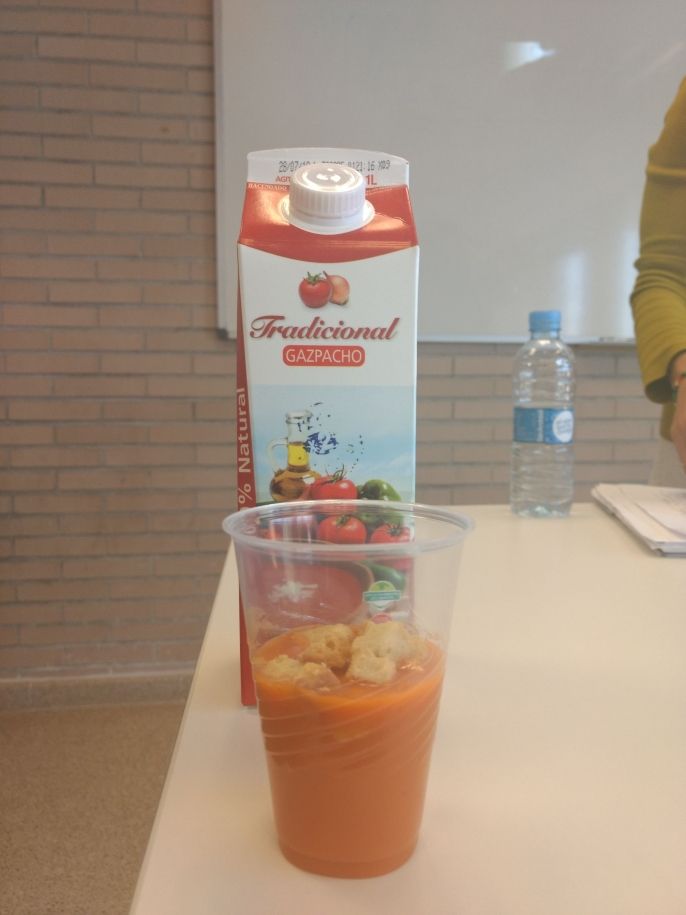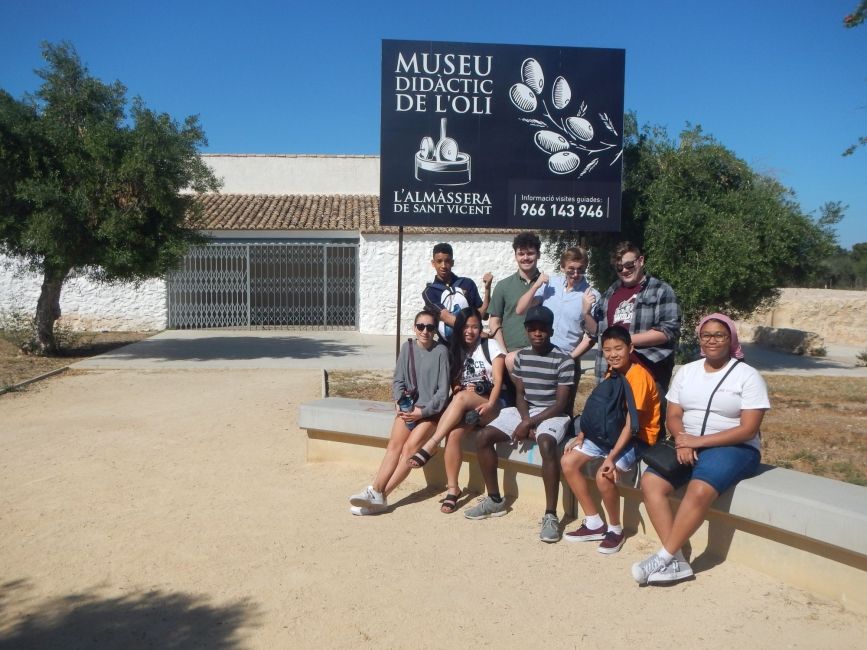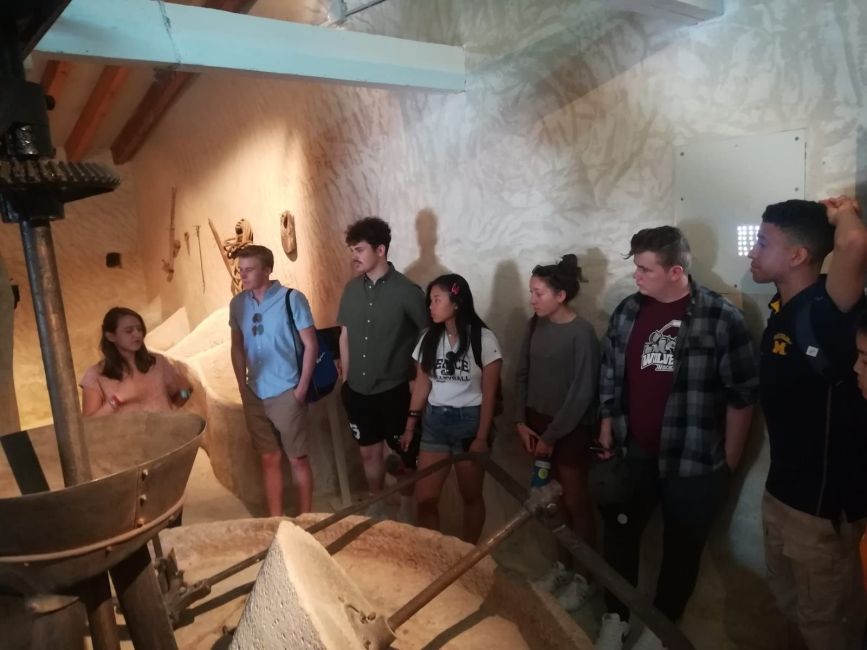Olive oil museum
Yesterday we had our typical continental breakfast and then it was off to class. Our lovely teacher, Gertru, taught us about the gastronomical history of the world. We covered historical periods dating back to the Paleolithic age and then went all the way to the present. The students were then divided into smaller groups and were selected to research influences in Mediterranean gastronomy. One group was responsible for learning and teaching about Arab influence, another group was responsible for discussing Jewish influence, a third group was responsible for presenting on Christian influence, and the final group was responsible for discussing ingredients of the new world.
After the presentations, we all enjoyed a cup of Gazpacho. Gazpacho is typically described as a tomato-based cold soup that originated in the southern part of Spain, more specifically in Andalusia.
After class, we went out for lunch and ate chicken paella from El Rincón del Refranero. We thoroughly enjoyed our meal.
Given that olive oil is a staple in Mediterranean cuisine, which is an integral aspect of Spanish cuisine, we thought it ought to be appropriate to visit an olive oil museum. Olive oil has become very popular all over the world, especially for its health benefits, but does anyone really know that much about it? At the museum, we learned the process of how olive oil is made. Olive oil has existed since the classical era and throughout history, the tools used in ancient times have been modernized, but the process remains relatively the same.
In case you grow olives and would like to make your own olive oil, this is how you do it:
-
Harvest ripe olives.
-
Clean the olives:
-
Remove the leaves and stems
-
Wash with pure water
-
-
Grind the olives
-
Mix the olives into a paste
-
Extract the olive juice through a press
-
Put the olive juice through a decantation and filtration process
And there you have fresh olive oil. If you have an extra large batch you might consider the following steps in the olive oil industry:
-
Conserve the oil in stainless steel tanks
-
Bottle the olive oil
Maybe we will just continue to purchase olive oil at the grocery store.
After the tour of the olive oil mill, we had a photo shoot. Check out these pictures!
Today we met our local counterparts: teenagers. We met at a cafe called Cool Bakery.
Related Posts

Group Adventures in Alicante
It’s truly heartwarming to witness the friendships and bonds that form so quickly during our high school summer abroad program in Alicante, Spain. Even though the students have known each... keep reading
How to Talk to Your Family and Friends About Your Summer Abroad in Palma
This blog post offers tips for Global Navigators on how to share their summer abroad experience in Palma with friends and family. From focusing on meaningful stories and journaling daily to staying connected and encouraging others to apply, it helps students reflect on their journey and express how it shaped them. It ends with a creative call to action—writing a letter to their pre-Mallorca self or sharing a favorite photo and story—to keep the experience alive even after returning home.

Student Spotlight: My Summer in Spain by Chisom Eke
A summer in Spain was something I once believed I would never experience—until now. From the Bronx to Barcelona, learning the cultural differences has been quite the ride. When I... keep reading














